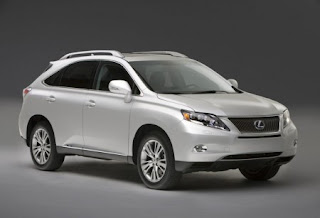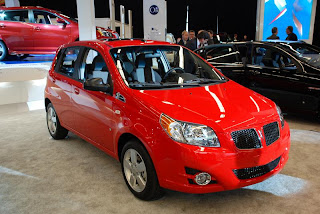
Officially, the story from Saab last September was that our car was a well-worn pre-production example. After suffering heavy-duty use during a press preview drive in April of 1999, it then toured Western states with a wide-ranging sample of automotive journalists behind the wheel. The car had had a rough life. Under scrutiny was a Saab 9-5 SE Wagon that had just stranded one of our writers on Interstate 70 west of Denver, and we wanted to know why a $38,000 luxury car with 5,000 miles on the odometer had completely crapped out on the side of the road.
Apparently, the air-conditioning compressor seized, which caused oil to leak on the serpentine drive belt, which caused the belt to slip off, rendering the car undriveable. Fortunately, we had a cell phone with us and were able to contact Saab's roadside assistance operator, who informed us it might be a couple of hours before help arrived. Instead, a tow-truck driver happened by and asked if we needed help in reaching the local Denver Saab dealer. We took him up on his offer to expedite the trip home.
Saab was eager to have us drive the car again after repairs, and we agreed to do so, but our schedule wasn't clear until recently. Now that we've had a trouble-free week in the 9-5 Wagon, we're ready to report that though a stylish and capable piece of work, we're not sure the price premium commanded for this family hauler is worthwhile.
Breaking down only served to cement this impression. Recent test-drives in competing, and usually less expensive, wagons also kept us from liking the 9-5. Certainly, this Swedish automaker is haunted by a reputation for sketchy quality, but there are design and content flaws inherent in the 9-5 that must be called into question.
For a vehicle intended to transport well-to-do families, there's very little storage designed for the detritus that accompanies said family. The center console contains a secondary, albeit removable, cupholder that eats up most of the space. The small front and rear door bins are oddly shaped. The dash slot is too thin to hold some cell phones. There are magazine pockets on the backs of both front seats, an adequate glove box, and a good-sized storage well in the left rear cargo panel that looks like it should house a CD changer, but otherwise, this Saab provides no space to stash stuff.
Part of the storage issue, at least for front-seat occupants, could be resolved by relocating the ignition from its present location between the seats to a more conventional spot on the dash or steering column. Ditto the power window controls, which are on the center console rather than the door panels. Though it is Saab tradition to have the ignition "on the floor," this quirk is tiresome as we move into the next century. Plus, the giant black key fob interferes with the window controls.
While we're discussing the key fob, let's mention that it is large enough to solicit pickle jokes when stuffed into a front pocket, and so poorly marked that it is virtually impossible to discern what buttons control the various locking and unlocking functions in anything less than broad daylight.
Equipped with $520 front and rear heated seats and a trick $425 sliding load floor that can support one pound per dollar spent on this option, our $38,420 Saab did not have ventilated leather and the standard premium audio system was unable to deliver the quality of sound we expect from Harmon Kardon components. We did get automatic dual-zone climate control that senses whether a front-seat passenger is on board. When you're driving alone, the system acts like a single-zone setup. Another bonus is that the temperature control ascends and descends in increments of two, making it easier to cool or warm the cabin quickly.
Other interior pluses include industrial-strength adjustable cargo tie-down tracks in back and a sturdy cargo cover. Dashboard buttons have a high-quality look and durable rubberized texture, combined with the silky movement usually associated with Lexus products. After the sun goes down, a Night Panel feature dims all secondary gauges and switches, leaving just a 90-mph speedometer to distract your eyes in the dark. We entertained ourselves with the simple yet elegant joystick vent controls, pivoting front map light, and aviation-style "fasten seatbelts" sign.
Saab has gone to great lengths to ensure occupant safety with the 9-5 Wagon. Extensive crash testing was conducted during the engineering phase of the 9-5. A specially designed B-pillar helps dissipate crash energy before it intrudes on the cabin, while side airbags designed to protect both the head and torso manage the remaining force that threatens passengers. Force-reducing and pre-tensioning seatbelts help prevent belt-induced injury, while Saab's Active Head Restraint system reduces the chance for whiplash in a rear-end collision.
Powered by an "Ecopower" asymmetrically turbocharged 3.0-liter V6 making 200 horsepower at 5,000 rpm and 229 ft-lbs. of torque at 2,500 rpm (with a fat reserve of twist all the way to 4,000 rpm), the 9-5 Wagon accelerated strongly in Denver's thin atmosphere. There is a slight stumble off the line as the turbo spools up, but then a steady rush of power is on tap all the way to extralegal speeds. With the four-speed automatic transmission in "Sport" mode, the car holds gears longer for more aggressive acceleration, but each time the Saab is shut off, so is the "Sport" mode. There's also a "Winter" mode that provides second-gear starts for better traction on icy or snowy surfaces.
Ride quality from the front strut and rear multilink underpinnings is mushy, like a Buick Century, and it feels like the bump stops are encountered often, resulting in the impression that the Saab is undersuspended. At least feedback through the steering is good, so that the driver has some idea what's happening at the road surface. Roll control could be better, with our test example exhibiting scuffed front sidewalls from over-enthusiastic drivers who had plowed the Saab around hairpin turns. Brakes perform remarkably well and the pedal is easy to modulate, but the beautiful five-spoke alloy wheels quickly become coated with a thick sheen of brake dust, requiring constant cleaning that results in filthy fingernails.
Stylish good looks can't overcome our remaining gripes with this car. Real walnut interior trim manages to look fake and the center armrest slides irritatingly fore and aft when you lean on it to extract change from your left pocket. Strangely for a Saab, the eight-way power driver's seat doesn't offer optimal adjustment for a perfect driving position because the bottom cushion height and tilt features cannot provide maximum lift of both buttocks and thighs simultaneously. Furthermore, the funky smell of the leather clings to clothing after exiting the car, there are no cross bars on the roof surface to protect the paint from strap-on car-top carriers, and road rumble precludes rear-seat occupants from enjoying conversation with front-seat riders.
Perhaps the breakdown we suffered unfairly colored our impressions of the Saab 9-5 Wagon. After all, it is quite unusual for a test vehicle supplied by an automaker to a journalist to be in less than tip-top shape, much less strand us on the side of the highway. But, giving Saab the benefit of the doubt and assuming that the mechanical malfunction was attributable to this car's specific history, there still isn't much here to convince us that the front-wheel-drive 9-5 is worth a $10,000 price premium over well-equipped wagons from Subaru or Volkswagen, or similarly priced all-wheel-drive models from Audi and Volvo.










































